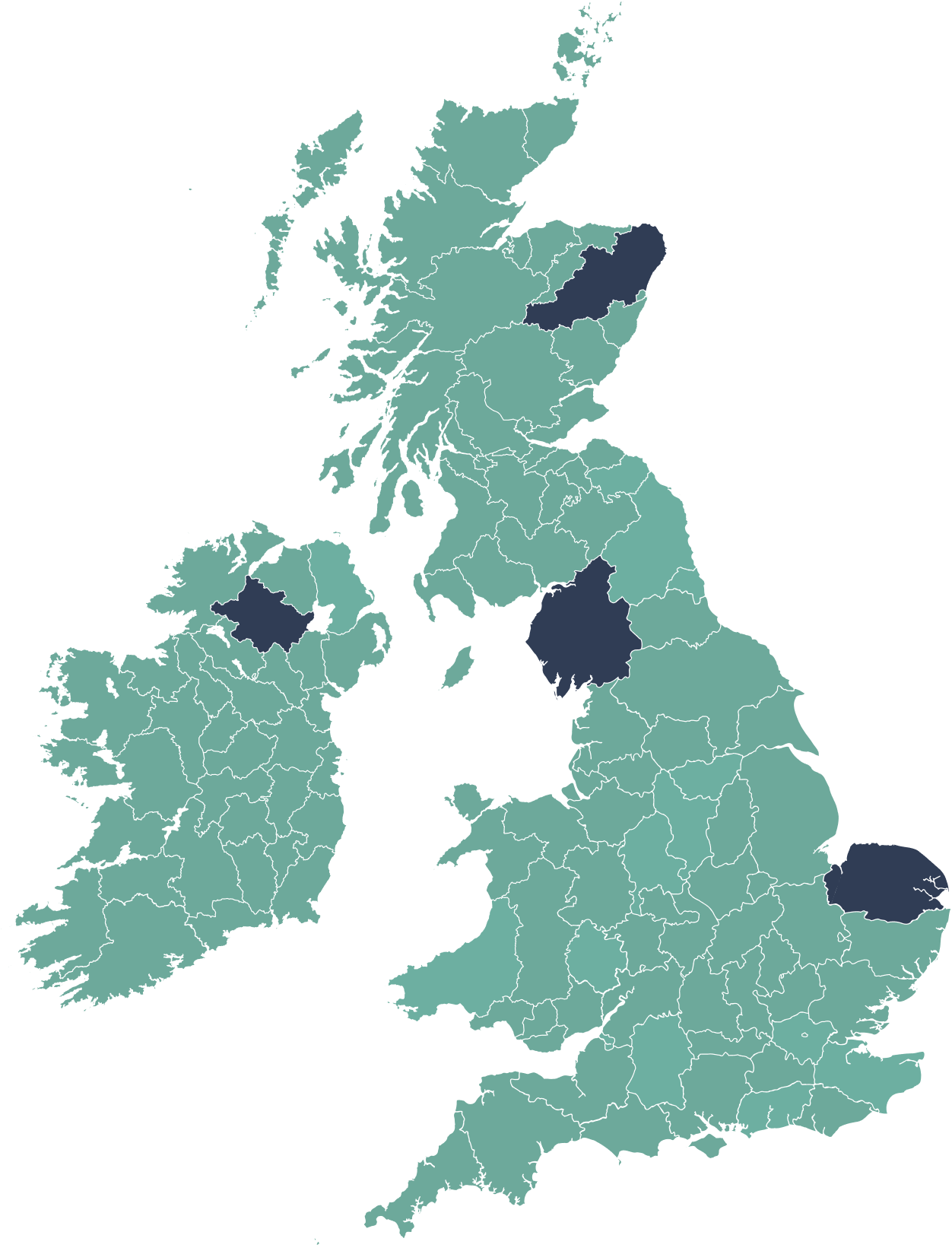Sanofi supported the planting of 1,600 climate resilient trees across the UK in 2023-24
Sanofi is working in partnership with GreenTheUK and the Royal Forestry Society (RFS) to plant new climate resilient trees across UK woodlands. This project focuses on excellence in woodland management, working with foresters and aborists to ensure we are planting for the future with knowledge being shared from one generation to another.
Planting for the future means nurturing skills that will protect woodlands from pests, diseases and improve resilience to climate change. 41% of England’s woodlands are unmanaged or under-managed, which poses threats to the health and sustainability of woodlands. Sanofi is helping to support tree planting rooted in knowledge of UK woodlands, looked after by experts.
The Committee on Climate Change recommends woodland cover is increased to a minimum of 17% by 2050, requiring 30,000 to 50,000 hectares a year of woodland creation. This will store carbon, increase biodiversity, flood control and create a low-carbon route to increassing the resilience of the rural economy.
This planting season, 2023-24, the UK has seen 11 named storms, according to the Met Office highlighting the need to act each planting season to protect and restore UK woodlands.
This year, Sanofi has planted 1,600 climate resilient trees in the UK to help take climate action.

Tree Species Planted:
400 trees planted in Cumbria
Many of the trees in this important ancient woodland were broken, damaged or blown over by Storm Arwen. The new trees in this woodland have been planted to help increase the woodland’s resilience to storm damage and quickly replace the woodland habitat that was lost in the storm. This is a particularly important site for native red squirrels, who live and breed in this woodland. The trees have been specially chosen to ensure a continued supply of pinecones (one of the squirrels’ favourite foods) and suitable habitat for building nests (dreys).
400 trees planted in Tyrone
This woodland has been badly affected by the tree disease ash dieback. When choosing restock species, we considered the ecological function that ash trees played within the woodland and seek to mitigate against this loss by choosing a proportion of tree species that fulfil some of these functions. Diseased ash trees have been replaced with oak trees and a mix of native and non-native broadleaves and conifers. This will help to increase the biodiversity of the woodland by providing many different habitats for birds, mammals and insects.
450 trees planted in Aberdeenshire
This woodland was badly damaged in 2019 by Storm Arwen. The storm took out several pockets of trees within the woodland. As part of this project, damaged and fallen trees have been replaced with a mix of evergreen and deciduous trees. Smaller trees, such as aspen, willow and rowan will form an understory that will be particularly beneficial to local wildlife. Above this, faster growing trees such as spruce, larch, fir and cedar will form a canopy and help protect trees from further storms.
350 trees planted in Norfolk
Oak and fir trees have been selected to plant in amongst other trees (some of which are over 150 years old). This will help to diversify the age structure of this woodland, helping to protect it against extreme weather events and attacks from pests and diseases. The woodland contains several ponds, which are managed for wildlife, particularly their thriving populations of frogs, toads and newts.

UN's Sustainable Development Goals
As a GreenTheUK partner, you support projects that are in line with the UN Sustainable Development Goals.

Take urgent action to combat climate change and its impacts.

Sustainably manage forests, combat desertification, halt and reverse land degradation, halt biodiversity loss.













































































.jpg)
.jpg)
.jpg)
.jpg)
.jpg)
.jpg)
.jpg)
.jpg)
.jpg)
.jpg)
.jpg)
.jpg)
.jpg)
.jpg)
.jpg)
.jpeg)
.jpeg)
.jpeg)
.jpeg)
.jpeg)
.jpeg)
.jpeg)
.jpg)
.jpg)
.jpg)
.jpg)
.jpg)
.jpg)
.jpg)
.jpg)
.jpg)
.jpg)
.jpg)
.jpg)
.jpg)
.jpg)
.jpg)
.jpg)
.jpg)